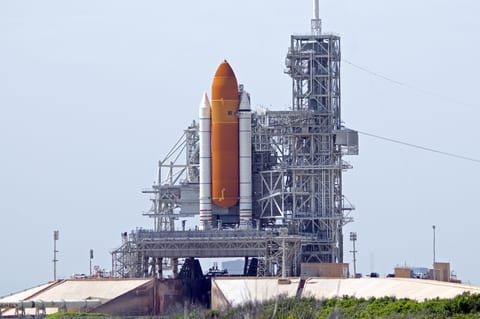
NASA Hitches a Ride With Russia – Nyet a Good Idea
David Williams
August 3, 2012

When the U.S. government decided to end NASA’s space shuttle program, it shouldn’t have come as a surprise that some dramatic alterations were to follow. Chief among them was that NASA’s program would transition from what had been a government-run program to an environment where the private sector’s role in space exploration was greatly increased. Given the sweeping effects of ending the shuttle program, NASA should have prepared itself to not only anticipate and identify potential changes, but also be ready to respond appropriately.
Unfortunately, NASA was short-sighted and failed to develop a long-term strategy to confront the termination of its space shuttle program. A recent USA Today article explained that the general public may have been unaware of plans to retire NASA’s shuttle program, but this surely was not the case for anyone at NASA. Not only did NASA know that the government’s shuttle program was nearing a close, it also had more than an ample amount of time to prepare for an alternative course of action. Despite this, the agency still lacked the foresight to employ a private company to serve the function of transporting our astronauts to space.
As a result, U.S. astronauts were left no other choice than to catch a ride with Russians to travel to the International Space Station (ISS) during a July 14 launch. As Reuters recently reported, “Since the retirement of the space shuttles last year, the United States is dependent on Russia to fly astronauts to the ISS, which costs the nation $60 million per person.” If this seems like a pretty penny to pay for space travel, it is. Economics 101 will tell you that one of the best ways to decrease costs for a product or service is to introduce competition to the market. Companies will compete with each other to create the best product at the least cost to consumers. The company that does this best will thrive.
No such exercise or competitive bidding process occurred when NASA chose to pay Russia to transport our astronauts. Rather than allowing private sector companies to compete for the government’s business of transporting its astronauts, NASA just went with the option in front of it: Russia. As should be apparent by now, when the government does something dumb, it is not the one that is stuck suffering the consequences. The taxpayers are left to pick up the tab, and our dollars are used to clean up the messes that inevitably result with poor government decision making. In this particular instance, some of the problems and costs surely could have been mitigated had NASA exhibited forward thinking and planning.
If NASA has any interest in ensuring that more of its programs are not also “retired,” it should act more responsibly with taxpayers dollars. That means not missing the boat, or more appropriately, the space shuttle by finding the most economical means of space travel. Not to mention, this will likely prevent our astronauts from being in the awkward place of hitching a ride with Russians. NASA should embrace what benefits private sector involvement will bring to space travel and exploration. As Tom Coughlin wrote in his contribution to Forbes, “After decades of expensive and infrequent space travel we seem to be at the cusp of a new generation of much less expensive and faster growing commercial space transportation options.”
